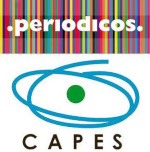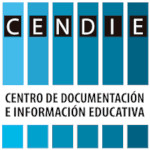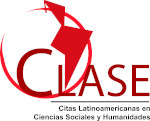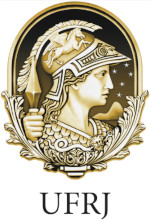Reconexão entre teoria e prática em um curso técnico afetado pela pandemia
DOI:
https://doi.org/10.26849/bts.v48i.916Palavras-chave:
Ensino remoto; ensino de emergência; COVID-19Resumo
Relata-se a experiência da oferta de duas disciplinas de um curso técnico subsequente em Eletromecânica durante a pandemia de COVID-19. O objetivo principal é trazer uma análise das estratégias de ensino adaptadas para as disciplinas de Eletrônica Básica, utilizando simuladores, de forma totalmente remota, e de Acionamentos Eletrônicos, ofertada de forma híbrida, entre aulas remotas e presenciais, observando o engajamento dos estudantes nessas disciplinas. Para tanto, buscou-se referencial teórico sobre o uso de simuladores e foram definidas metodologias para cada uma das disciplinas, considerando o contexto da pandemia. Como resultado, são apresentados um comparativo entre a oferta das duas disciplinas e as metodologias utilizadas, uma análise do engajamento dos estudantes e aprendizados para trabalhos futuros.
Downloads
Referências
AUTODESK. Eagle. 2021a. Disponível em: https://www.autodesk.com/products/eagle/free-download. Acesso em 9 nov. 2021.
AUTODESK. TinkerCAD. 2021b. Disponível em: https://www.tinkercad.com. Acesso em 5 nov. 2021.
BOND, Melissa; BEDENLIER, Svenja; MARÍN, Victoria I.; HÄNDEL, Marion. Emergency remote teaching in higher education: mapping the frst global online semester. International Journal of Educational Technology in Higher Education, [s. l.], v. 18, n. 50, p. 1-24, 2021. Disponível em: https://link.springer.com/content/pdf/10.1186/s41239-021-00282-x.pdf. Acesso em: 25 ago. 2022.
COSTA, Maria Adélia; COUTINHO, Eduardo Henrique Lacerda. Metodologias ativas e currículo integrado: a travessia para as práticas pedagógicas motivadoras na educação profissional técnica de nível médio. Boletim Técnico do Senac, Rio de Janeiro, v. 45, n. 7, p. 7-20, set./dez. 2019. Disponível em: https://www.bts.senac.br/bts/article/view/792. Acesso em: 25 ago. 2022.
COUTINHO, Carlos Roberto. Utilização de programas de simulação de circuitos no ensino de eletricidade e eletrônica. In: CONGRESSO BRASILEIRO DE EDUCAÇÃO EM ENGENHARIA, 41., 2013, Gramado. Anais [...]. [S. l.]: ABENGE, 2013.
HART, Daniel W. Circuit simulation as an aid in teaching the principles of power electronics. IEEE Transactions on Education, [s. l.], v. 36, n. 1, p. 10-16, fev. 1993. Disponível em: https://ieeexplore.ieee.org/abstract/document/204808. Acesso em: 25 ago. 2022.
OLIVEIRA, Muriel Batista de et al. O ensino híbrido no Brasil após pandemia do covid-19. Brazillian Journal of Development, Curitiba, v. 7, n. 1, p. 918-932, jan. 2021. Disponível em: https://www.brazilianjournals.com/index.php/BRJD/article/view/22597. Acesso em: 25 ago. 2022.
PEREIRA, Nuno. O 555 como temporizador (monoestável) regulável. [Blog] Electric Ideas, [s. l.], 2014. Disponível em: https://electricideas.wordpress.com/2014/03/29/o-555-como-temporizador-monoestavel-regulavel/. Acesso em: 5 nov. 2021.
SILVA, Carlos Alexandre Gouvea da; SANTOS, Edson Leonardo dos; PELACINI, Douglas Antonio Firmino. Evaluation of academic experience in learning education over simulator softwares. International Journal of Alive Engineering Education, Goiânia, v. 2, n. 5, p. 23-40, jul./dez. 2018. Disponível em: https://www.revistas.ufg.br/ijaeedu/article/download/54716/26998. Acesso em: 25 ago. 2022.
SUMMIT, Raymond.; RICKARDS, Tony. A construtivist approach to mathematics laboratory classes. In: DELTA CONFERENCE ON TEACHING AND LEARNING OF UNDERGRADUATE MATHEMATICS AND STATISTICS, 9., 2013, Kiama, Australia. Anais […]. [S. l. : s. n.], 2013.
VALENTE, Geilsa Soraia Cavalcanti; MORAES, Érica Brandão de; SANCHEZ, Maritza Consuelo Ortiz; SOUZA, Deise Ferreira de. O ensino remoto frente às exigências do contexto de pandemia: Reflexões sobre a prática docente. Research, Society and Development, [s. l.], v. 9, n. 9, p. 1-13, 2020. Disponível em: https://rsdjournal.org/index.php/rsd/article/view/8153/7109. Acesso em: 25 ago. 2022.
VALENTE, Solan Arantes. Transição do modelo de ensino presencial para o remoto no contexto do isolamento social: a experiência do TECPUC. Boletim Técnico do Senac, Rio de Janeiro, v. 47, n. 2, p. 98-113, maio/ago. 2021. Disponível em: https://www.bts.senac.br/bts/issue/view/92/144. Acesso em: 25 ago. 2022.
WANG, Guoping. Active learning in digital electronics: preview, exercise, teaching and learning. In: INTERNATIONAL MULTI-CONFERENCE ON ENGINEERING AND TECHNOLOGICAL INNOVATION, 2., 2009, Orlando. Proceedings […]. [S. l. : s. n.], 2009. Disponível em: https://www.iiis.org/cds2008/cd2009sci/imeti2009/paperspdf/f665aa.pdf. Acesso em: 25 ago. 2022.
Downloads
Publicado
Como Citar
Edição
Seção
Licença
Compromisso de Disponibilização dos Trabalhos em Licença Creative Commons
O Boletim Técnico do Senac será disponibilizado por meio da licença BY NC, de forma gratuita e sem fins comerciais.
Em vista disso, ao submeter seus trabalhos para avaliação, os autores se comprometem a providenciarem a disponibilização de seus trabalhos pela licença Creative Commons BY NC junto ao website <https://br.creativecommons.org>, dispensando, assim, a necessidade da assinatura de qualquer documento ou contrato com o Senac para regular a disponibilização de seus trabalhos no Boletim Técnico do Senac.
O(s) autor(es)declaram, ainda, que reconhecem o Boletim Técnico do Senac como periódico eletrônico de acesso livre, cujas Políticas e Diretrizes para Autores estão à disposição para conhecimento em seu sítio oficial na web, a saber – www.bts.senac.br – e que as mesmas podem ser modificadas a qualquer tempo, ficando imediatamente qualquer nova condição publicada on-line.



















